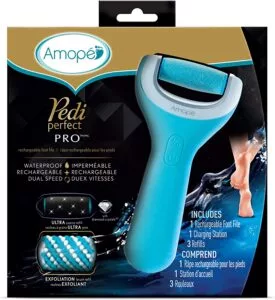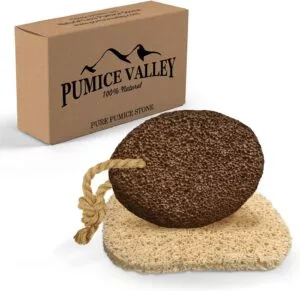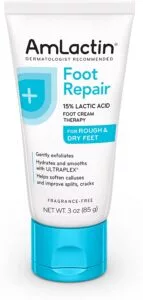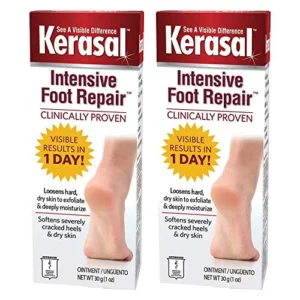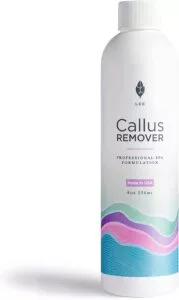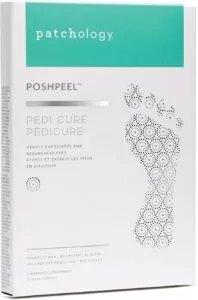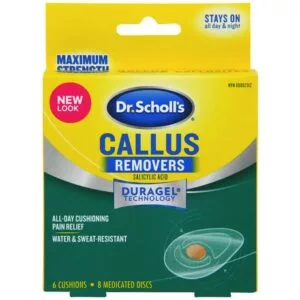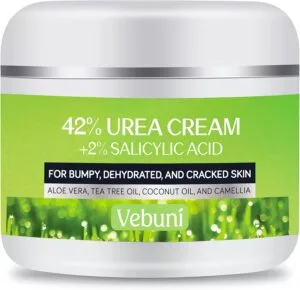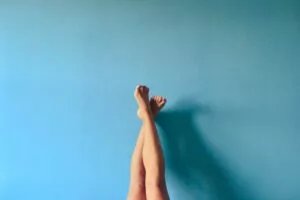
The Best Callus Removers in Canada
Although making an appointment with a pedicurist is one of the ways to solve callous, it is not often the most convenient or even affordable way. Fortunately, taking care of your feet, (preparing them for sandals season) is as easy to do at home. Ideally, you can prevent callous from worsening to the discomfort level by maintaining healthy skin on regular bases.
Before you start treating calluses with the callus removers we will be discussing and reviewing today, it makes sense to identify them properly. Typically, calluses are hardened areas of skin. With continuous pressure and friction that spot hardens and grows more layers. The harder the callus gets the more pain it causes while walking. That is why catching it at the early stage is as crucial as preventing it from coming back. If you catch a callus on your foot, remember to maintain it right away by filling and moisturizing. Expert pedicurists say that there is no permanent cure for calluses. Thus, only frequent and throughout care for your feet controls the appearance of hardening layers of skin.
Whether you are looking to remove calluses on your own or simply take better care of your feet, there are several products that deliver the best results. Read further to find out all you need to know about removing calluses at home.
Why Trust Us
At least ten hours of research is the number one reason.
The second one is a thorough analysis of customers’ reviews and their opinion on the best callus remover products.
The third reason is a comparison to the selection of other buying guides (especially those who had a chance to interview industry experts, such as podiatrists and pedicurists), such as The Strategist, Good Housekeeping, and Byrdie.
What To Look For in a Callus Remover
First, decide whether you want to try a physical or a chemical type of callus remover, (or combination of both). Coming in various forms, physical removers are pumice stones, files and razors. If you have a lot of dead skin a pumice stone is a must. The foot file, on the contrary, is less abrasive and ideal for regular maintenance.
Speaking of pumice stones, there is one downside to when compared to stainless steel files. Due to the porous nature of a stone, it might collect bacteria and mold. Meanwhile, stainless steel is easily washable and does not rust even if used during showering.
Another type of physical callus remover is an electric foot buffer—an efficient tool that does not require as much rubbing as pumice stone.
The chemical type can be a gel, a solution (that contains salicylic acid which has to be applied directly on the callus), masks, peels and creams. Most of those products contain acids that are meant to exfoliate skin and smooth it over time.
Whatever method you decide to use, remove calluses as gently and safely as possible. Staying away from aggravating cutting and irritating rubbing can keep your skin from injuries and potential infections.
Finally, both types physical and chemical offer different levels of strength. For instance, lotions are much gentler than gels, while foot files do not rub as rough as pumice stones do. Today, we will mainly discuss methods that have gentle to medium strength (they will remove calluses over time of frequent use). At the same time products that offer faster removal are expected to be used with caution.
The Best Callus Remover Overall
ZenToes Metal Foot File
Foot file is a compromise between rough stone touches and less effective foot lotions. This particular ZenToes metal foot file addresses dead skin and calluses around your toes and heels. It features a coarse side for removing calluses and a fine side for taking care of your skin after showering.
Besides, by using a foot file regularly you could increase blood circulation, which results in healthier skin overall. Use this ZenToe filing effectively not only to remove callus, but also if you spend a lot of time on your feet, wear tighter shoes, and if you have conditions such as diabetes, vitamin deficiency or other that affect your feet.
A satisfied reviewer who uses ZenToes foot file for a touch-up after her pedicure, (coarse side after walking barefoot or in her flip-flops, and a fine side after a shower or a bath), said she noticed how drastically quick her skin softened.
The scraper is made of quality stainless steel that does not rust and is washable and reusable. Remember to clean the filing after every use to remove dead skin and prevent bacteria from building up.
The handle is made from non-slip silicone which is easy to hold while scraping off calluses.
Pros
- Salon-style foot file.
- Washable and reusable.
- Quality stainless steel.
- Two versatile sides.
Cons
- The handle does not feel strong enough.
The Best Professional Callus Remover
Footlogix Double-Sided File With Rubberized Handle
The second foot file on the list is Footlogix Double-Sided one. Coming from the title, this scraper has two sides where one is coarser and the other one is finer. However, this tool differs from the cheese grater-like foot files (that frankly can damage your skin rather than remove callus). Even the coarse side of Footlogix is gentle enough to remove dead skin layer by layer instead of cutting through it.
One of the reviewers noted that Footlogix is a must-have self-care tool for in-between pedicure maintenance. No one likes rough feet catching on the sheets at night, she observed. “Just be sure to practice proper sanitation practices after each use and keep the scraper stored in a dry area,” she added.
If you have not had a pedicure done in a while, start by using the coarse side to remove callouses, and the fine side to maintain healthy smooth skin every time you shower.
Pros
- Double sided.
- Quality stainless steel.
Cons
- The foot file feels cheaply made.
The Best Electric Callus Remover
Pedi Perfect Pro Rechargeable Foot File
Pedi Perfect is an electric foot file that, according to reviewers, delivers results within days.
Someone who has been using Pedi Perfect (noticed a big difference to his feet), noted that you have to be gentle and have a slight touch when using. “You don’t need to grind your feet to the bone,” he said. Be gentle and patient and you will see results.
Although Pedi Perfect is a rechargeable foot file, you can use it in the bath or shower without worrying about breaking it. The Pedi Perfect comes with a charging station, a regular coarse roller head, one ultra roller head, and an exfoliation brush. Overall, you get all the necessary tools to get salon-like results in the comfort of your home.
Rotating the roller head can help to remove dead skin gently and effectively. In fact, you could use it on both dry and wet feet, and experiment with switching heads from coarse to ultra depending on the hardness of calluses.
Pros
- Waterproof.
- Rechargeable device.
- Versatile selection of heads.
Cons
- The motor is weak in terms of torque.
The Best Pumice Stone Callus Remover
Pumice Valley Natural Earth Lava Stone
One of the oldest and most effective ways of removing calluses is a pumice stone (they form when hot lava mixes with water and result in coarsely porous stones that vary in shapes and sizes).
A reviewer who bought two of these pumice stones said that she uses the black lava one on thicker dry skin, and the natural brown one for regular maintenance. She continues saying that over the years she tried many different methods of removing calluses and pumice stone worked the best.
Another reviewer noted that Pumice Valley Natural stone is best used on the skin immediately after showering when the skin is softest, but be careful not to overdo it.
This budget-friendly, natural tool rejuvenates and cleanses skin on your feet including removing calluses, warts and dead skin. Although a pumice stone is a coarse material, the result will depend on how hard you press and rub it. Use light pressure when cleaning and removing dead skin from toes and heels while showering, and harder pressure to take care of built-up calluses.
Make sure to let the pumice stone dry well after every usage, to avoid collecting bacteria and mold.
Pros
- Natural cleanser.
- Budget-friendly.
- Quickly softens and cleans dry skin and calluses.
Cons
- Can feel too rough when dried out.
The Best Foot Repair Cream
AmLactin Foot Repair Cream
AmLactin repair cream is an acid-based product that soothes hardened skin on toes and heels by exfoliating and hydrating it. However, considering that this lotion contains alpha hydroxy acids it might make your skin prone to sunburn. Apply sunscreen before leaving your house or make sure to use this lotion only in the evening after taking a shower.
Another effective way is to gently rub in a thick layer of this cream, put on a pair of socks and leave it overnight on your feet.
A satisfied user of AmLactin Foot Repair noted that after applying it to her feet twice a day for a week, her feet felt smoother than they had been for ages and the dead skin was gone.
Other users were satisfied with the affordable price and drugstore availability, also noting the non-greasy and fragrance-free formula. Someone else commented that Good foot cream softens hardened rough skin if you use it at least twice a day. Tube is a little small for the money but the quality of the product is great, she added.
Pros
- Exfoliating and hydrating formula.
- Improves splits and cracks.
- Available at most drugstores.
Cons
- Fairly small for the price.
The Best Intensive Foot Repair Cream
Kerasal Intensive Foot Repair
Another foot lotion that penetrates deep through the skin is Kerasal Intensive Foot Repair. Since it contains acid, you will notice exfoliated and smoothed skin just after one use. Besides, this ingredient helps to break down the callus while keeping the skin moisturized.
“This is a nice ointment to apply to feet and toes after showering. I have used it multiple times and it does soften my feet,” said a user of the lotion. It does not effectively soften hard calluses, but can be used as a regular maintenance product, she continued. Especially if you wear thick cotton socks right after applying the cream.
Speaking of application, we recommend wearing gloves when using Kerasal Intensive Foot Repair. Gloves will not only protect the gentle skin of your hands, but also create a barrier maximizing penetration on your feet.
While Kerasal promises visible results in just one day, the truth is it will depend on the condition of your feet. You will notice softer skin after one use, however over time of frequent application, the lotion will repair and heal cracks and remove calluses.
Pros
- Complete foot care in one product.
- Smoothing and healing formula.
- Visible results in one day.
Cons
- To completely heel cracks and remove callus, it may take at least two weeks of application.
The Best Callus Remover Gel
Callus Eliminator Liquid & Gel
As per a satisfied user of Callus Eliminator Liquid & Gel, who had bad callouses since he was a kid and even pedicures could not get rid of them, this product does wonders. Calluses got to the point of being painful. He used Callus Eliminator Liquid & Gel and left it on for five minutes, with a use of foot file afterwards. “My feet look like the feet I’d never seen before!” the reviewer noted.
Callus EliminatorLiquid & Gel is an effective product for callous remover. The instructions suggest soaking your feet in hot water first. Then apply a thick layer of gel on the damaged area and let it sit for about ten minutes. Rinse and rub the callous with a foot file.
Other reviewers warn against leaving it on the skin longer than ten minutes (especially not overnight!) for it can burn your skin and cause serious irritation.
Pros
- Professional spa formula.
- Effective callus remover.
- Affordable.
Cons
- Can cause irritation and skin burns if left on for too long.
The Best Callus Remover Footmask
Patchology PoshPeel Pedi Footmask
Patchology’s PoshPeel foot mask not only allows you a spa-like treatment at home, but also instantly soothes your skin. It contains various acids including glycolic and citric, as well as botanical extracts that exfoliate skin and gently remove layers of built-up dead skin.
The main advantage of Patchology’s PoshPeel foot mask is the ease of application. Simply put them on your feet, wear socks on top for a snugger fit, turn on your favourite movie and lay down to relax. Repeat the same procedure for a few days in a row and you will be satisfied and surprised with smooth, crack-free heels and toes.
Pros
- Easy to use.
- Acids induced formula.
- Gently peels off dead skin.
Cons
- Results might take a while to appear.
The Best Callus Remover Pads
Dr. Scholl’s® Callus Removers with Duragel™ Technology
Made with Duragel technology, Dr. Scholl’s Callus Remover is one of the most effective products for those who let calluses on their feet build up for too long. If you have tried several removal products and methods, but nothing seems to bring results, give a try to Dr. Scholl’s Callus Remover.
It promises to provide pain relief just after one application. As one user noted, three applications addressed her years-old callus issues, and after some time she was able to peel off dead skin.
Pros
- Immediate pain relief.
- Long-lasting wear.
- Duragel Technology.
- Thin and flexible cushions.
Cons
- Might take some time to remove calluses.
Ulensy Corn Remover Pads
The Best Moisturizing Cream For Cracked Heels
Vebuni Urea Cream for Feet
The final product we want to mention is Vebuni Urea Cream. It contains urea and salicylic acid, two ingredients that soften, nourish and exfoliate cracked and dry skin. This cream is the last step you would apply after scraping your feet with a file or pumice stone. It will restore and nourish dry and cracked skin, and the more you use it the softer your feet will get. Among acids, there are ingredients such as aloe vera, coconut oil, tea tree oil, and camellia that also contribute to hydrating.
A reviewer with type II diabetes noted that the skin on her foot and between the toes has been scaling off for years. She tried a lot of foot cream but was not cured until recently. She applied Urea Cream twice a day in the morning and before bed. “It’s magical, my feet didn’t scratch my bedding and I woke up with the not-as-dry foot,” the reviewer said.
The best way to apply this Urea Cream is to wash and dry the irritated spot first and then rub the lotion on the affected area. Repeat at least two times a day for two weeks depending on the type of callus.
Pros
- Nourishing formula.
- Long-lasting effect.
- Budget-friendly.
Cons
- The scent is not the most pleasant.
Questions and answers about callus removers
What is the best way to remove calluses?
A pumice stone is considered one of the most effective ways to remove callous. However, it is a combination of products (gels, lotions, foot files), and regular care that delivers the best result.
How to get rid of thick calluses?
Getting rid of thick calluses is a process that combines both chemical product application and physical scraping. Use gels and creams that contain acids and urea for a faster dissolving of dead skin. Scrape off dead skin with a foot file or pumice stone. Repeat until the callus is gone.
To avoid another appearance of calluses, file dead skin off your feet regularly while showering, and add additional padding to your shoes, especially if you spend most of your days standing or walking.
What do podiatrists/pedicurists use to remove calluses?
Licensed pedicurists or podiatrists use a surgical blade to remove calluses. However, such a method is not recommended when you are taking care of your feet at home. While professionals know how to maneuver a blade across the calluses area, doing that at home is dangerous: you might cut through the skin too deep and cause injuries or infections.
What dissolves calluses?
While acid and urea-based products can help to dissolve calluses, start by soaking your feet in warm water. Soaking affected skin in soapy water can help to soften calluses. After that, it will be easier to scrape off dead skin.
Why does thick callus keep coming back?
If no matter your attempts to scrape off calluses, they keep coming back, look for the core of the issue in the shoes you wear. Calluses appear when skin is too irritated either by being pressed by the wrong footwear size or continuous friction.
How do you make homemade callus remover?
If you want to mix up a callus remover of your own and avoid drugstore chemical products, try combining three teaspoons of baking soda with one spoon of warm water. Soak up the callus in warm water and then apply the paste on the damaged area.
Another DIY callus removal method is mixing 4:1 water and apple vinegar, and soaking the damaged area for about twenty minutes. Then peel off as many layers of dead skin as you can.
Read more
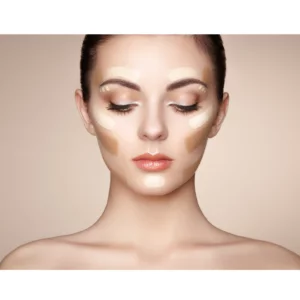
The Best Stick Foundations in Canada
A foundation stick is a versatile makeup tool.
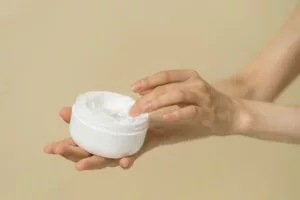
The Best Body Lotions in Canada
A high quality moisturizer can be a great ally to prevent dry skin, improving skin texture and softness.

The Best Blackhead Removers in Canada
Pore vaccuums, cleansers and face masks! Everything you need to clear your skin.
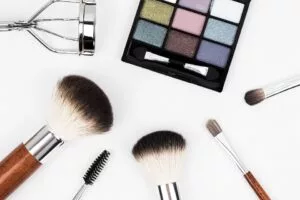
Best Liquid Foundations in Canada
Here we cover the best foundations in Canada along with their pros and cons.


